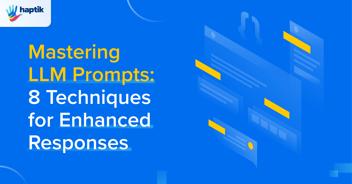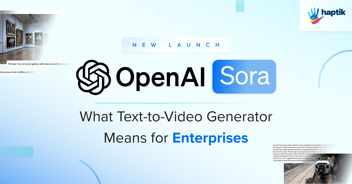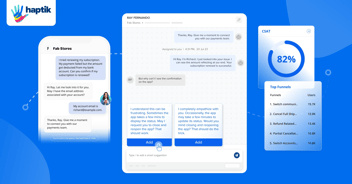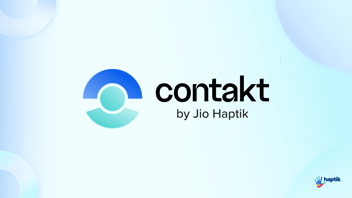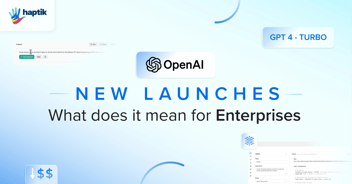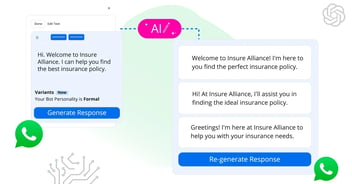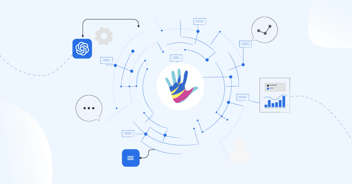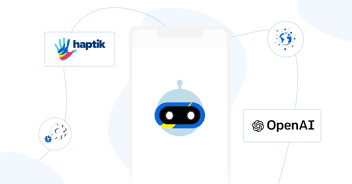OpenAI has unveiled new large language models (LLM) under the family “o1” - o1-preview and o1-mini. o1-preview is tailored to solve a broad range of complex problems, while o1-mini is the best for coding and math. Unlike traditional language models that rely on human feedback and large volumes of data, o1 is trained with reinforcement learning for internal reasoning processes. Reinforcement learning helps o1 improve its output quality over time, while excelling at handling complex, multi-step queries and solving intricate problems through logical thinking. Mirroring the human tendency to think before addressing a difficult question, o1 generates an internal chain of thought to deliver more accurate responses at scale.
Explained: How to Craft Effective Prompts for Enhanced LLM Responses
While it is designed to solve challenging problems in coding, math, and science - o1’s ability to handle complex reasoning, automate workflows, and provide deep insights, makes them powerful tools for various use cases.
A Comparison of o1-mini vs GPT-4o vs GPT-3.5
|
Feature |
o1-mini |
GPT-4o |
GPT-3.5 |
|
Purpose |
Optimized for STEM reasoning tasks |
General-purpose, low-latency |
General-purpose, versatile |
|
Main strength |
Excels in areas such as math and coding |
Real-time, responsive interactions |
Balance between versatility and speed |
|
Complexity handling |
Excels in scenarios that require efficiency, speed, and cost control |
Suited for simpler tasks but with speed |
Capable of handling moderately complex tasks |
|
Latency |
Lower latency |
Significantly low latency, near-real-time responses |
Moderate, task-specific |
|
Processing power |
Needs fewer computing resources |
Lower compared to o1 |
Moderate, between GPT-4o and GPT-4o mini |
|
Use cases |
Suited for coding, and capable of accurate generating and debugging complex code |
High-volume real-time interactions |
Broad range of applications, including basic reasoning and content generation |
|
Scalability |
Designed for critical business applications |
Scalable for broader, real-time use cases |
Scalable for general tasks |
|
Cost |
80% cheaper than o1-preview model |
Moderate, designed for low-latency needs |
Moderate, balanced cost for versatility |
Agentic Behavior
o1 can autonomously create plans, self-correct, and execute multi-step reasoning processes. These capabilities were previously achieved by layering third-party tools on top of LLMs. With agentic workflows, o1 completes these tasks within a single framework for higher efficiency and better overall performance. Moreover, o1 boasts superior processing power and faster computations, making it a potential game-changer for diverse applications.
Executive's Guide: AI Agents: Reimagining the Breadth of Automation
High Task Complexity
By focusing on offline and non-real-time workflows, o1 can be a valuable asset for companies looking to tackle complex tasks that require deep reasoning but not immediate response. For instance, generating strategic reports, drafting contracts, or even predicting long-term business outcomes can benefit from o1’s capacity to automate multi-step, logical tasks in a methodical and accurate manner.
In back-office functions like financial auditing, legal research, supply chain management, and operational planning, o1 can automate workflows by breaking down complex queries into manageable steps, and self-correcting throughout the process. This capability allows businesses to streamline operations without the need for multiple layers of AI tools or third-party software, reducing both overhead and time-to-insight.
Solving Challenges Across Industries
o1 can assist doctors by reasoning through complex diagnoses or analyzing intricate medical research for deeper insights and more accurate conclusions. Similarly, in education, it can help create personalized learning plans for students using its advanced logic and reasoning to cater to individual learning styles.
The Way Forward
By combining the real-time capabilities of GPT-4o and GPT-4o Mini with the advanced complex reasoning of o1 models, businesses can address both immediate needs and more intricate challenges, ensuring a robust and versatile solution framework. The low latency of GPT-4o and GPT-4o mini models can help in delivering quick, responsive interactions that are crucial for high-volume, real-time scenarios. For more complex scenarios that require deep understanding and capacity for problem-solving, o1 models are capable of streamlining workflows, driving efficiency, and enhancing overall value.
Related: [Download] The CXO's Guide to Enterprise Gen AI Adoption












